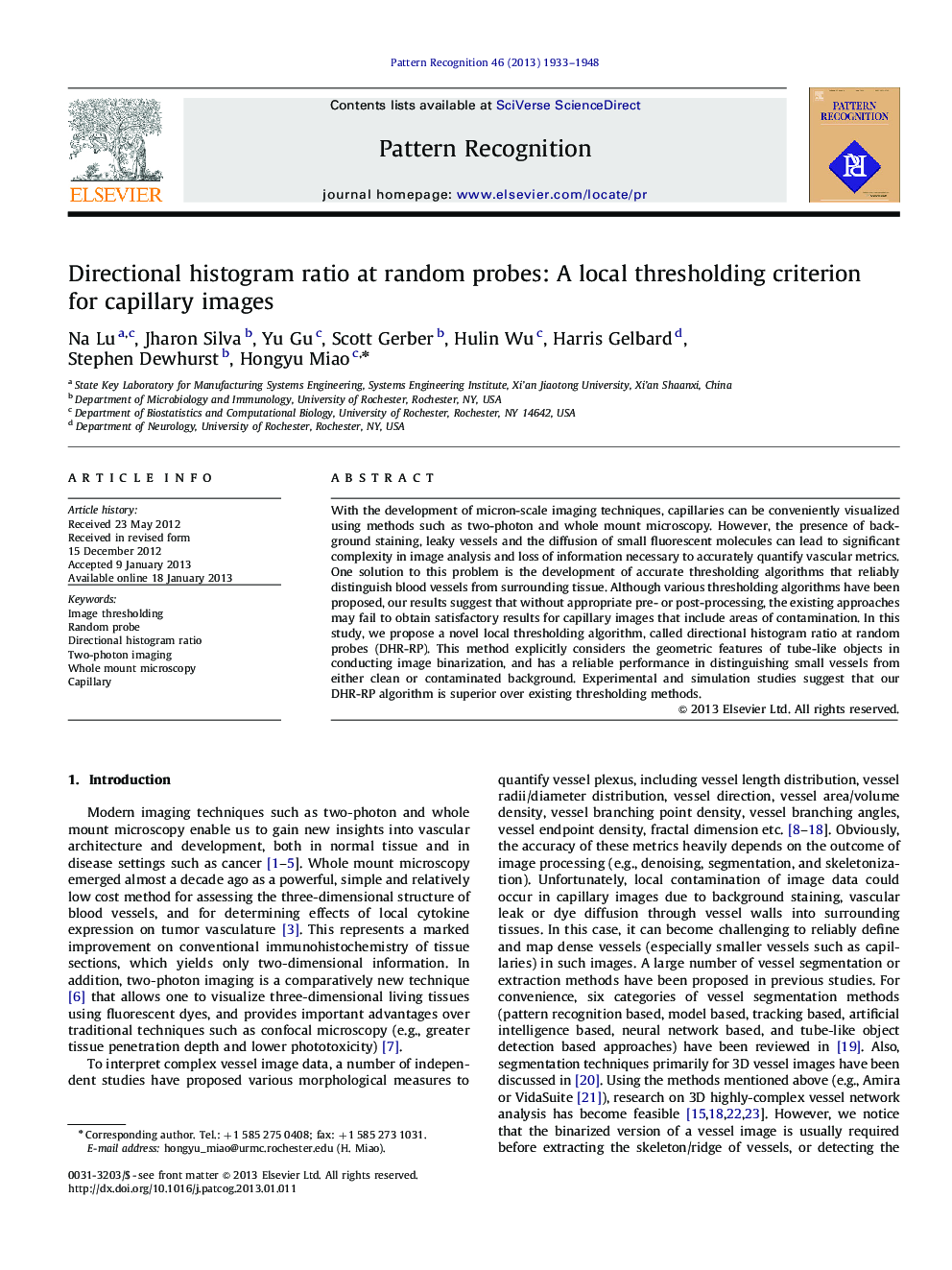| Article ID | Journal | Published Year | Pages | File Type |
|---|---|---|---|---|
| 530552 | Pattern Recognition | 2013 | 16 Pages |
With the development of micron-scale imaging techniques, capillaries can be conveniently visualized using methods such as two-photon and whole mount microscopy. However, the presence of background staining, leaky vessels and the diffusion of small fluorescent molecules can lead to significant complexity in image analysis and loss of information necessary to accurately quantify vascular metrics. One solution to this problem is the development of accurate thresholding algorithms that reliably distinguish blood vessels from surrounding tissue. Although various thresholding algorithms have been proposed, our results suggest that without appropriate pre- or post-processing, the existing approaches may fail to obtain satisfactory results for capillary images that include areas of contamination. In this study, we propose a novel local thresholding algorithm, called directional histogram ratio at random probes (DHR-RP). This method explicitly considers the geometric features of tube-like objects in conducting image binarization, and has a reliable performance in distinguishing small vessels from either clean or contaminated background. Experimental and simulation studies suggest that our DHR-RP algorithm is superior over existing thresholding methods.
► Thresholding algorithm deals with both clean and heavily contaminated vessel images. ► Random probes sample the geometric features of tube-like objects. ► Directional histogram ratio can be an indicator of both contamination and existence of tube objects. ► DHR-RP has a superior performance over existing approaches based on real samples and an extensive simulation study.
